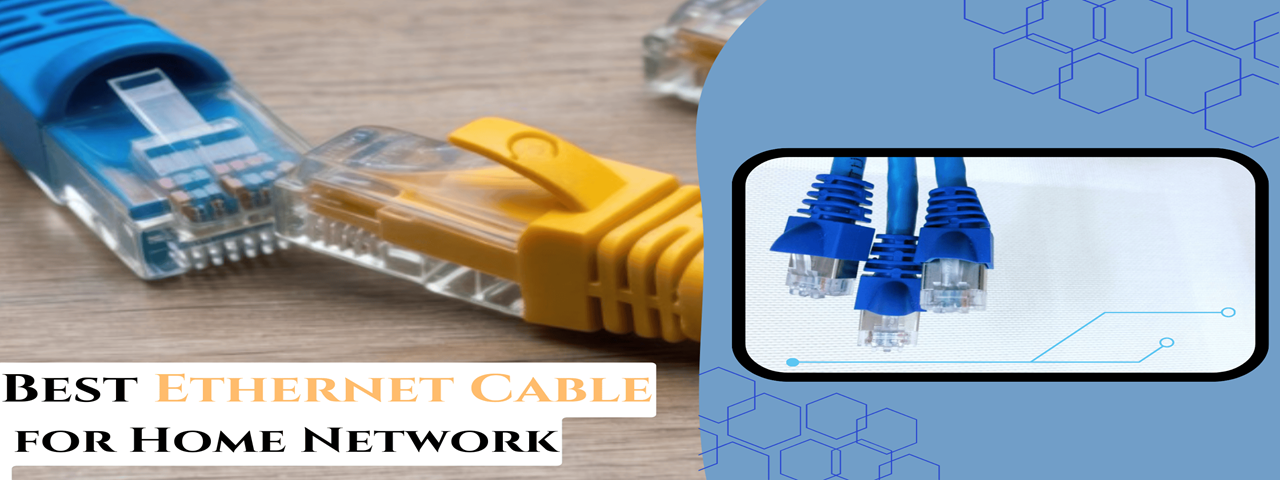
Ethernet cables, commonly known as network cables, are copper wires covered in a plastic coating. These cables are used in offices and homes to connect devices to the internet using plug-and-socket connections.
Choosing the best cables for home or office might be difficult. However, once you know your networking needs, you can easily choose an ideal cable.
There are various things to keep in mind while choosing the best Ethernet cable for your networking needs. Let us look at them one by one.
There are several classifications for Ethernet cables, and each offers a different level of performance. Cat5e, Cat6, Cat6a, and Cat7 are the most common categories.
This is a better version of the original Cat5 model. These cables are designed for small offices and residential networking configurations. Cat5e cables support speeds of up to 1 Gbps at a maximum distance of 100 meters with a 350 MHz bandwidth. Usually, this cable is available as Unshielded Twisted Pair (UTP). Even though Cat5e is sufficient for a wide range of applications, it is becoming relatively outdated due to rising network needs, especially when compared to newer categories that offer higher speeds and better shielding.
Cat6 cables offer significant improvements over Cat5e cables and are an ideal choice for gaming, small businesses, and high-performance home networks. These cables can support 10 Gbps speed over short distances (up to 55 meters) and 1 Gbps over 100 meters and provide better data transmission and reduced interference. Another improvement in these cables is that they can offer 550 MHz bandwidth speed and are available in both unshielded twisted pair and shielded twisted pair versions.
Operating at frequencies up to 750 MHz, Cat6 cables provide speeds up to 10 Gbps over shorter distances (up to 100 meters), making them an improvement over Cat6. Due to their increased efficiency in handling larger data rates, they are perfect for large networks and high-speed applications.
With frequencies up to 1000 MHz and speeds up to 10 Gbps, Cat7 cables are intended for high-speed networking. They are appropriate for areas with high electromagnetic interference (EMI) because they provide improved shielding to lessen crosstalk and interference.
When choosing an Ethernet connection, the speed and bandwidth requirements of your network must be taken into consideration. Broadband connections with higher speeds and bigger bandwidths are ideal for data-intensive applications.
High-Speed Applications: Cat6a connections are recommended for tasks requiring faster speeds, such as 4K video streaming, online gaming, and file transfers of significant size. They can manage large data loads and deliver faster speeds.
Standard Internet Use: Cat5e or Cat6 connections are normally sufficient for basic home networking. Ordinary residential networks offer sufficient performance and speed.
The signal quality may be impacted by the length of the Ethernet cable you select. Ethernet connections like Category 6 cables can typically travel up to 100 meters without experiencing appreciable signal loss. So, when buying any such cable, look for the distance up to which that particular cable can transmit data with better efficiency.
Shielding is another essential factor to be considered while investing in the networking cables.
In areas where electromagnetic interference (EMI) is prevalent, like offices with lots of electrical equipment or industrial settings, shielding is essential. Shielded cables support dependable performance by shielding the signal from outside interference. They have twisted wires that are encased in a copper braid jacket or foil wrapping.
These cables are widely used and best suited for low-interference settings. They function well for the majority of homes and small offices. UTP cables contain pairs of wires twisted together to help reduce and prevent electromagnetic interference.
Foiled twisted pair cables differ slightly in that each twisted pair of cables is shielded from crosstalk and electromagnetic interference by a separate foil wrap.
These cables combine FTP and STP shielding types. The wires inside the cable are twisted and then shielded with foil wrapping. These four-pair clusters of foiled wires are protected by a flexible braided screening or foil wrapping. This kind of wrapping offers the best defense against EMI and crosstalk.
The outer jacket is also essential to consider before investing in a networking cable. There are usually three types of cable jackets: plenum, riser, and PVC. You can choose one based on use.
This cable is ideal for the plenum spaces between your walls and roofs. These cables are designed to be less hazardous in the event of a fire. Moreover, they can operate well at higher temperatures than other insulation materials like PVC.
These cables are ideal for riser spaces in your building or home. Riser spaces are vertical spaces like an elevator shaft. You can install Plenum cables in these spaces but not the other way around.
Polyvinyl chloride, or PVC, is an outdoor cable. This type of jacket can withstand extreme weather conditions and harsh temperatures.
Another important factor to consider while choosing an Ethernet cable is the conductor type. The conductor used in an Ethernet cable can affect its signal quality, durability and overall performance.
Provides the best signal quality, lower attenuation (signal loss), and higher durability. These conductors are ideal for long-distance, high-speed, and PoE applications. However, these conductors are less flexible.
Copper Clad Aluminum conductor is a cheaper alternative to pure copper but has higher electrical resistance. These conductors might have more signal loss and are not suitable for PoE applications due to heat buildup.
These conductors offer more flexibility for applications requiring frequent movement, such as patch cables and office setups. But Ethernet cables with these conductors experience higher signal loss over distance compared to solid copper.
Ethernet cables provide a smooth network connection, but if you want them to perform in the most efficient way, you must get the cables that best fulfill your networking needs. By focusing on the cable type, bandwidth, length, shielding, construction quality, and outer jacket, you can make an informed decision about getting the cable that will be reliable or durable for you for years to come.